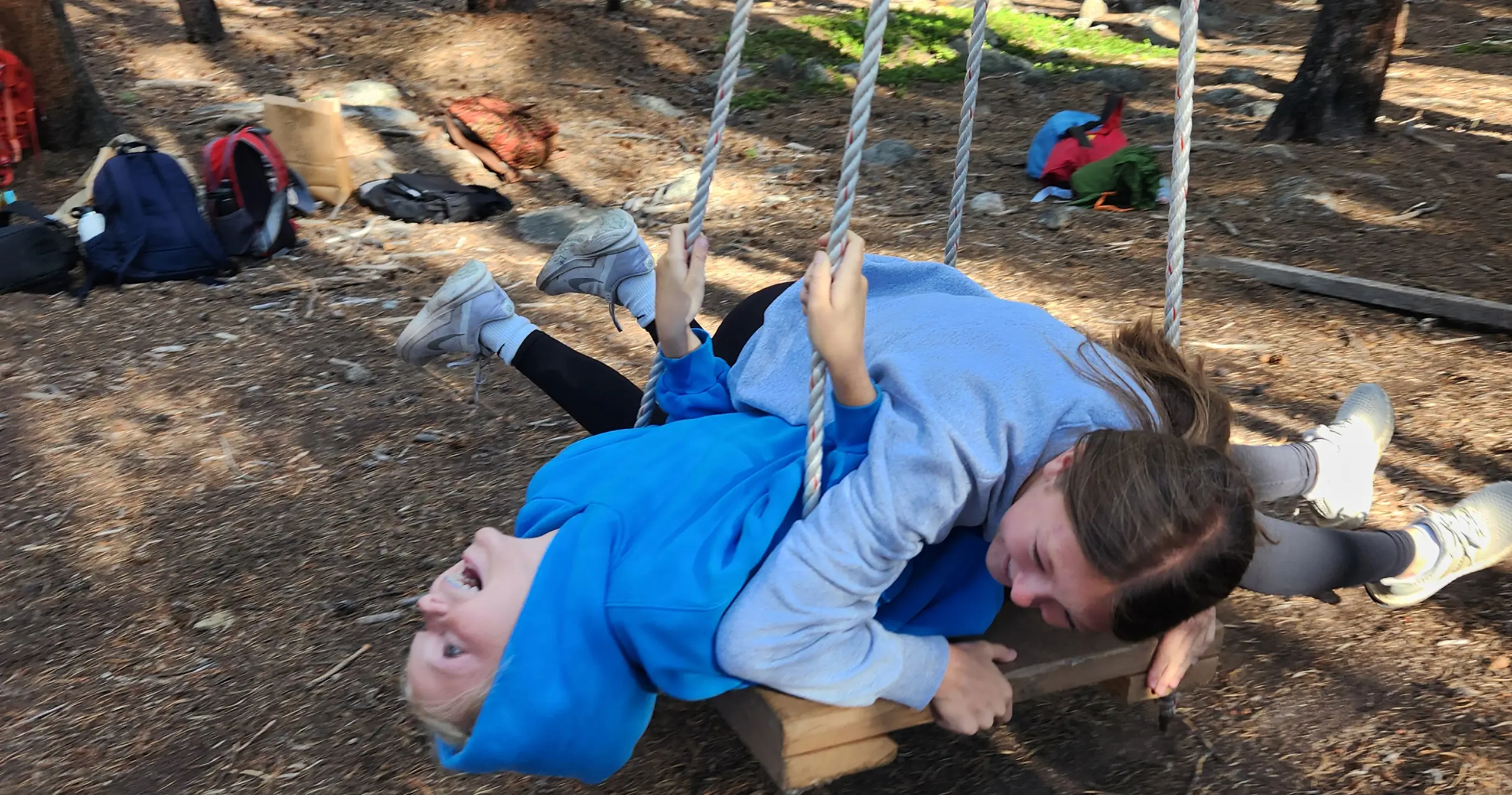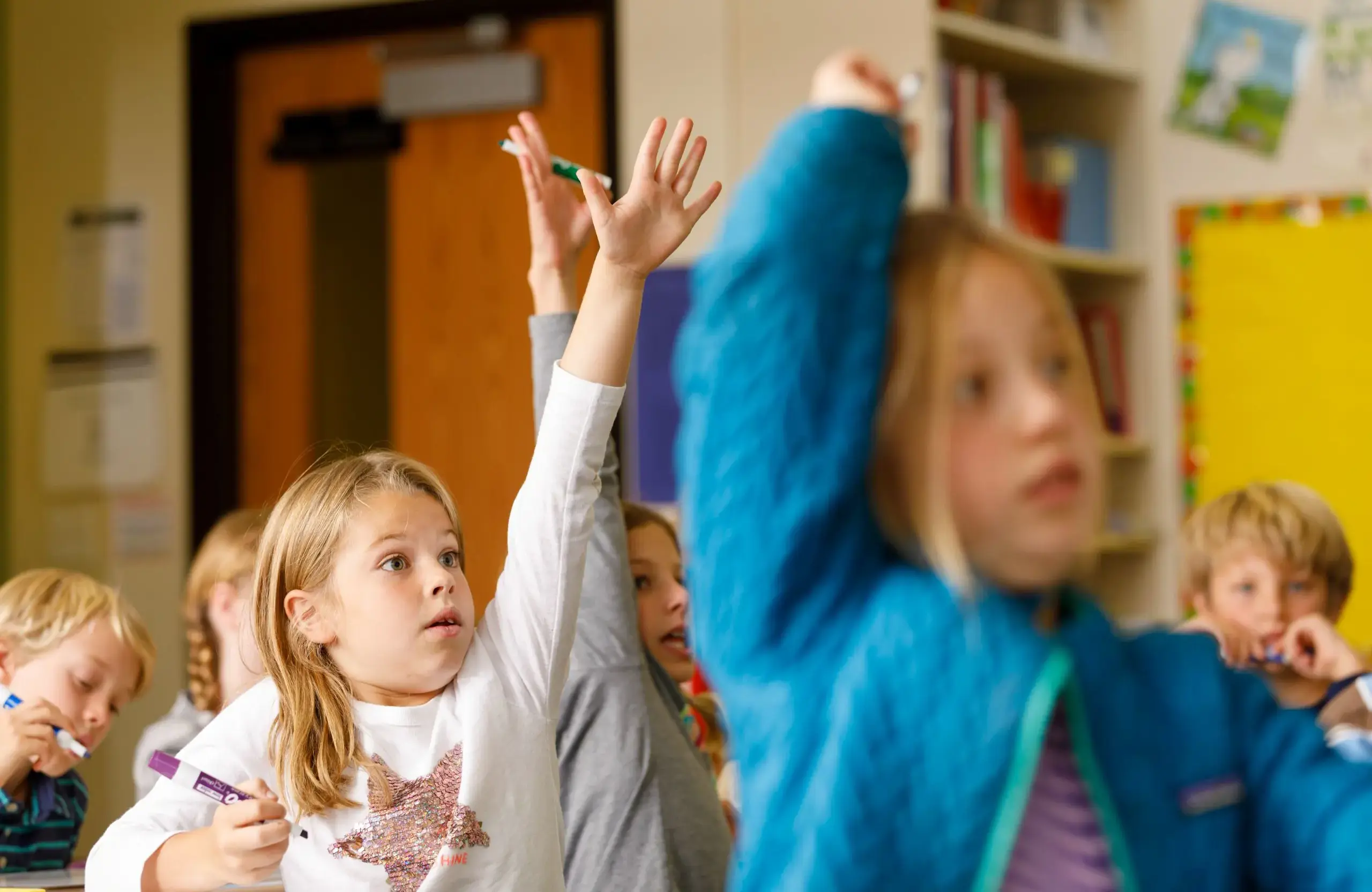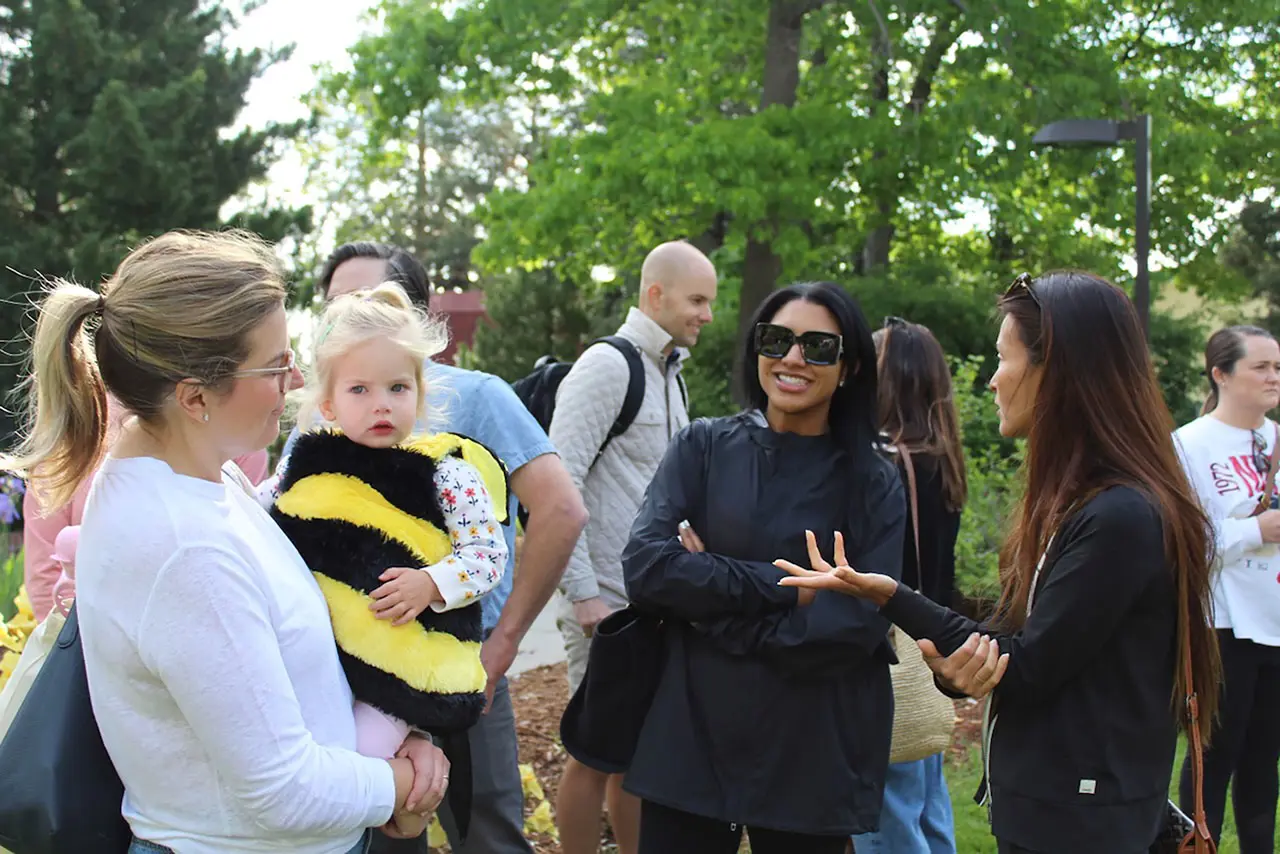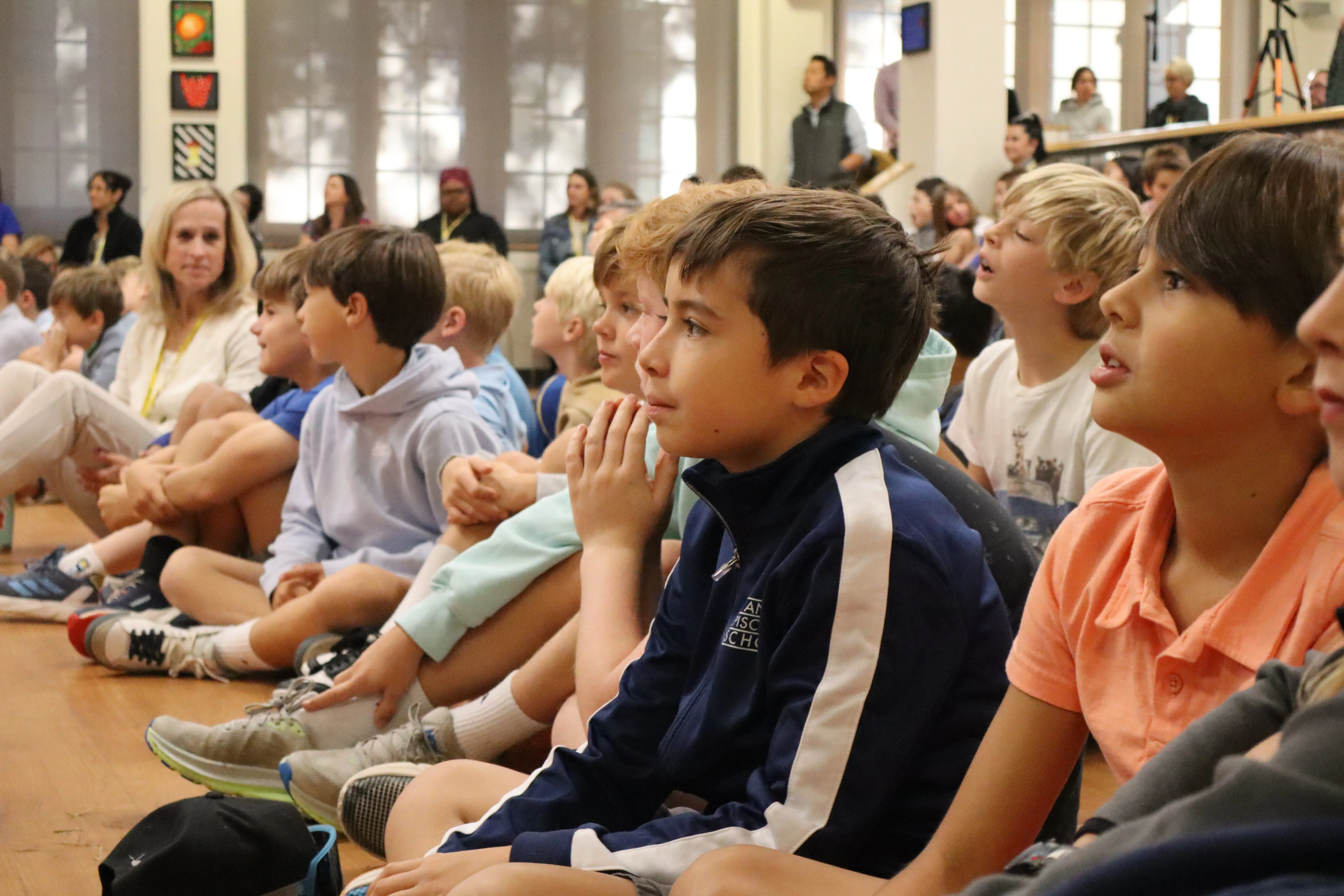Sixth Grade Overview
| 6th Grade English |
|---|
|
The “Human Journey” theme in 6th-grade Social Studies is also explored in 6th-grade English class. 6th-grade English uses a variety of pedagogical approaches to teach and explore literature and writing. Some of those approaches are:
In writing, the students begin with a short, well-written paragraph and expand that to a multi-paragraph essay. Regarding reading texts, the students explore a variety of texts that are assigned as well as self-selected. 6th-grade students will read every day in class, whether with their assigned or self-selected reading. Students are also exposed to vocabulary and grammar skills daily. The units of study in English class align well with our Social Studies themes so that students can see the connections between these disciplines. At the end of the year, students work on a capstone project that allows them to work on a multi-genre project and human issues that matter to them. The capstone project includes a written element and a presentation encompassing their multi-genre research. The 6th-grade students finish their year exploring what it means to be human by writing letters to their 8th-grade selves. |
| 6th Grade Math |
|---|
|
Topics Covered:
6th-grade math is a full exploration of basic mathematical concepts. Teachers employ a variety of strategies aimed at different learning modalities, including kinesthetic, visual, oral, and aural. Students collaborate on a daily basis in solving simple and complex problems. The curriculum is traditional and is based on the McDougal-Littell textbook series written by Larson et al. However, most assignments come from other resources, including IXL, math puzzles, and tailored worksheets. Interactive competitive games are often played to reinforce skills. Students engage in projects that require higher-order thinking skills and collaboration. An example of this is the volume project, where groups collaborate to create dioramas out of three-dimensional solids. Students learn not only about calculating volume, but also how solids are used to make tasks easier for differently-abled individuals. Students explore how mathematics is used and misused in the real world. They learn how graphs can be interpreted and misinterpreted, and that this can lead to the marginalization of individuals and groups. In the third trimester, students explore geometry, including one-, two-, and three-dimensional figures. They calculate volume and surface areas of solids by learning how to break down those solids into unit cubes and nets, respectively. |
| Advanced 6th-grade/Grade-level 7th-grade Math |
|---|
|
Topics Covered:
Pre-Algebra is a full exploration of basic mathematical concepts with variables. Teachers employ a variety of strategies aimed at different learning modalities, including kinesthetic, visual, oral, and aural. Students collaborate on a daily basis in solving simple and complex problems. The curriculum is traditional and is based on the McDougal-Littell textbook series written by Larson et al. However, most assignments come from other resources, including IXL, math puzzles, and tailored worksheets. Interactive competitive games are often played to reinforce skills. Students engage in projects that require higher-order thinking skills and collaboration. An example of this is the investment project, where groups collaborate to invest the maximum allowable Individual Retirement Account (IRA) amount over a hypothetical working life of 40 years. Students not only learn about compounding and the time-value of money, but also key financial concepts such as wealth, risk, and inflation. Students also explore how mathematics is used and misused in the real world. They learn how graphs can be interpreted and misinterpreted, and that this can lead to the marginalization of individuals and groups. In the third trimester, students explore geometry, including one-, two-, and three-dimensional figures. They calculate volume and surface areas of solids by learning how to break down those solids into unit cubes and nets, respectively. |
| 6th Grade Social Studies |
|---|
|
Social Studies for the Future: Exploring Humanity and Building Tomorrow In 6th-grade social studies, we explore the grand story of everything! We begin with the Big Bang and journey through the formation of stars and planets, all the way to the emergence of life and the evolution of humans. Students investigate how humans developed language and formed civilizations, starting with hunter-gatherers and then moving to farmers and the development of cities. This course has students thinking like a social scientist, exploring how humans organize themselves in society and how we interact with the environment. The course dives into some big questions:
We trace the development of agriculture, explore early democracies, and learn about the Industrial Revolution and its impact. We examine how the world has become more complex with each passing age, and how we’re now living in the Information Age, with a focus on the future of our cities and our planet. We focus on building skills such as organizing, planning, research, and active learning. Along the way, students become better readers, writers, and researchers. They learn how to analyze information, develop their own ideas, and support claims with evidence. They demonstrate the ability to locate, analyze, evaluate, synthesize, and cite research materials. The course encourages design and lateral thinking, as well as imagination. This is more than just a social studies class; it's an opportunity to understand the world around us and discover one’s place in it! |
| 6th Grade Science |
|---|
|
6th-grade science is an integration of physical, life, and earth sciences. The cornerstone of our science courses is the many hands-on, minds-on labs, activities, and projects held in small groups in our well-equipped science classrooms. Students learn how to incorporate scientific thinking in both inquiry-based learning and traditional lectures. Assessments are given on a regular basis and include:
Units of study in 6th-grade science include:
|
| 6th Grade World Language |
|---|
|
At St. Anne’s, we want our language students to feel confident communicating in an all-Spanish or all-French environment (target-language environment) and to become lifelong language enthusiasts. To achieve this, we strive to create a high-interest, supportive classroom environment in which students acquire the language (as opposed to simply learning about the language). We want students to:
Students are immersed in an environment that maximizes language acquisition. Instead of self-contained lessons on vocabulary topics, students hear words and functional language in naturally occurring, personalized contexts. For example, instead of teaching a unit about numbers and colors, students hear and use numbers and colors in real target-language conversation. When we talk about the calendar and the week ahead, we ask:
Over time, students learn the numbers and the colors, but in the context of authentic communication. |
| 6th Grade Religion |
|---|
|
6th Grade Religion Curriculum: Christianity, Episcopal Tradition, and People of Faith Following this foundational study, students expand their focus to include the lives of significant people of faith whose actions and beliefs were central to their missions. These figures include:
As students learn about these influential individuals, the concept of "mission" is emphasized. The course explores what it means to live a life of faith, service, and purpose, and what is necessary to fulfill one’s mission in the world. The culminating project for the year involves students researching a contemporary person or project that engages with religion or faith in action. They work in groups and reflect on their own mission, considering how they can contribute to social change and spiritual practice in their own lives. By the end of 6th grade, students will:
This course encourages students to think critically about their faith, how it can influence the world, and the ways in which they can contribute to a greater good. |
Physical Education
The ultimate goal of St. Anne’s physical education program is to engage students in developmentally appropriate movement experiences that focus on both learning to move and learning through movement. This program emphasizes a healthy, active lifestyle while promoting safe and cooperative physical activity practices.
| In Developmental Level Three (Middle School): |
|---|
|
Students are given opportunities to participate in activities that encourage fitness, sportsmanship, and the development of leadership.
The core focus of physical education is to foster an appreciation for the value of being physically educated. By doing so, students are encouraged to make informed choices in their future to remain active and fit throughout their lives. |
ADMI
Middle School Art, Drama, Music, Innovations & Design Thinking
Students take at least one trimester each of art, drama, music, and innovations during their middle school career.
| Art |
|---|
|
Students explore many media in this studio art class, including drawing, painting, ceramics, and more. The art skills a student learns from 6th grade to 8th grade may vary based on the curriculum, the specific art classes offered, and the teaching methods employed. However, during these middle school years, students typically:
The middle school years serve as a crucial period for students to build a strong foundation in various art skills, setting the stage for more specialized and advanced studies in high school and beyond. Art education during these years often emphasizes both technical proficiency and the development of a student’s creative and expressive capabilities. |
| Music |
|---|
|
Students learn musical skills from reading music to playing an instrument. This class culminates in a musical performance.
6th-Grade Music
7th-Grade Music
8th-Grade Music
|
| Drama |
|---|
|
Students participate in the trimester drama production, helping with set design, tech crew, and acting. They:
|
| Innovations and Design Thinking |
|---|
|
This class is designed to help each student become an expert in working as an Engineer, Scientist, Innovator, and Technologist to solve real-world authentic problems. Students follow the Design Thinking Process to create prototypes and solutions to address global and local phenomena. Units of Study Include:
Throughout this course, students develop critical thinking skills, creativity, and a deeper understanding of how design and innovation can impact the world around them. They will be encouraged to explore practical, sustainable, and futuristic solutions to challenges facing our community and beyond. |
Math
Placement and Progression
There are three math classes for each grade in middle school: two grade-level classes and one advanced class.
We place students upon their entrance into middle school using both qualitative and quantitative data, and we periodically review placement, especially during the 6th-grade year.
Grade-Level Math Classes Progression:
- 6th Grade: Foundations for Algebra
Advanced Math Classes Progression:
- 6th Grade: Pre-Algebra









